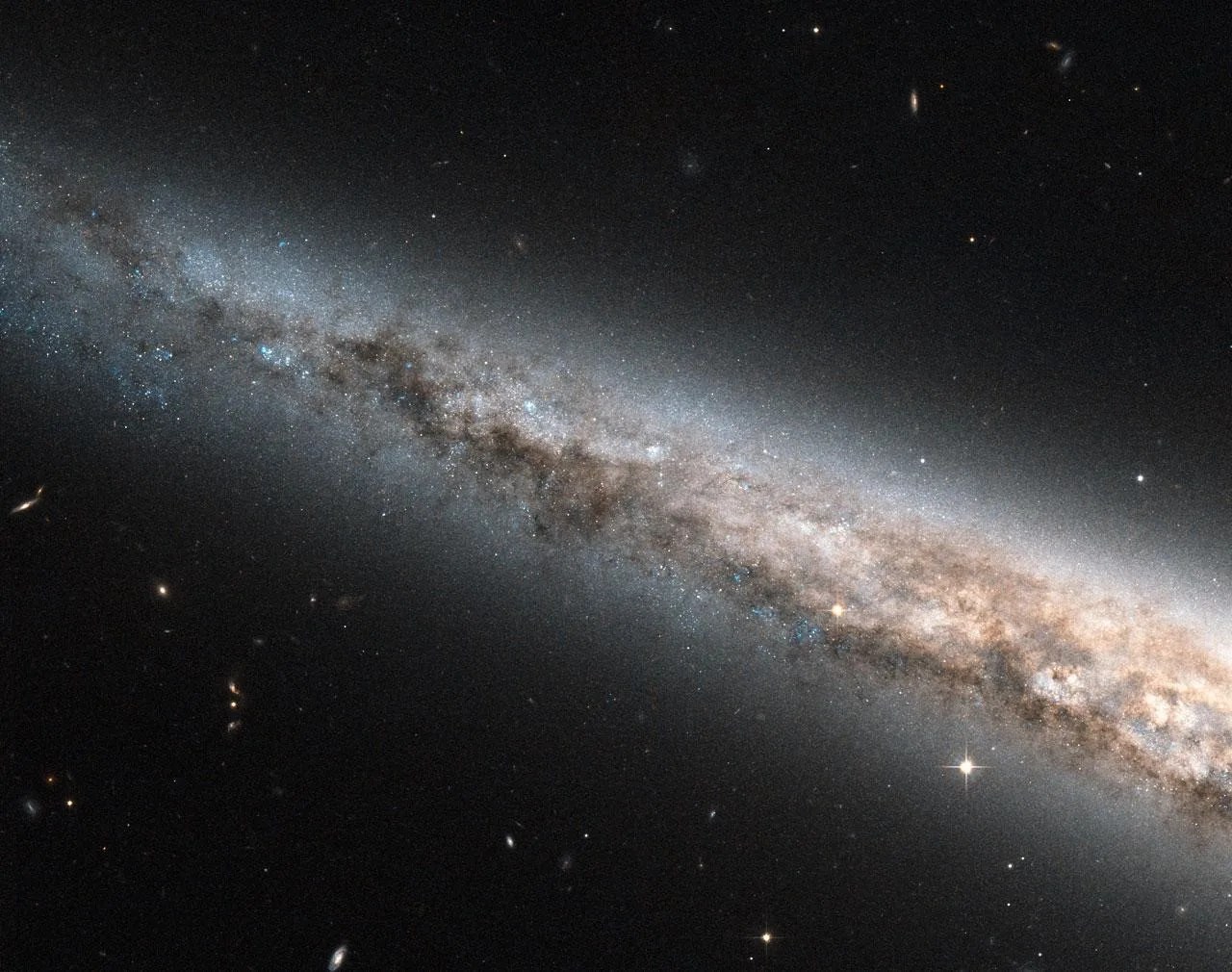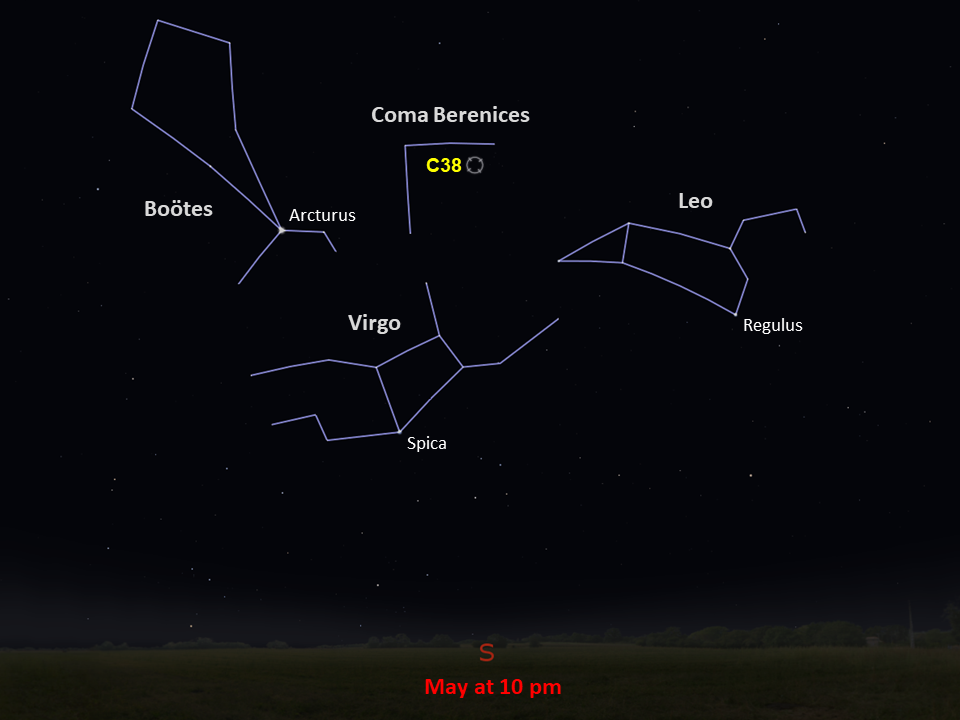Caldwell 38
Also called "The Needle" galaxy, or NGC 4565, Caldwell 38 was discovered by astronomer William Herschel in 1785.
Distance
40 million light-years
Apparent Magnitude
9.6
constellation
Coma Berenices
object type
Spiral Galaxy
Caldwell 38 is nicknamed the Needle galaxy, because in most telescopes it looks as thin and sharp as a pin. It is a spiral galaxy, but because it is seen almost perfectly edge-on, its spiral structure is concealed. This Hubble image, taken with the Wide Field and Planetary Camera 2, provides a detailed look near the galaxy’s core, which is largely obscured by thick ribbons of dust in the spiral arms.
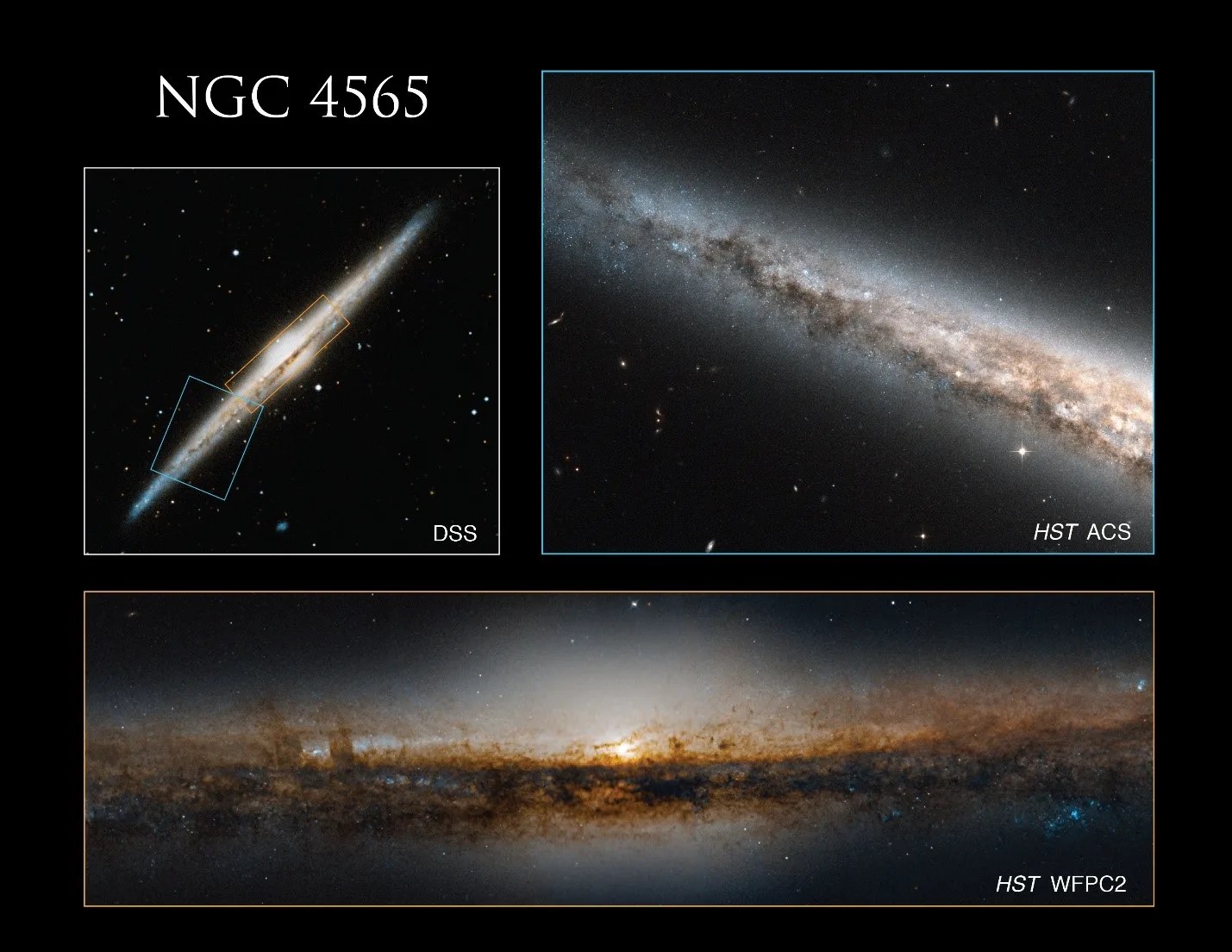
These observations were taken to search for large groupings of old stars, known as globular clusters, in Caldwell 38. Seeing the Needle galaxy edge-on provides an excellent opportunity to explore globular star clusters. While most of a spiral galaxy’s stars lie within a relatively flat plane, globular clusters tend to be sparsely distributed all around the galaxy, surrounding it like a diffuse shell. When seen face-on, a galaxy’s globular clusters easily get lost in the mix; when a galaxy is seen edge-on, however, these clusters stand out.
By conducting a survey of globular clusters in several edge-on spiral galaxies, scientists have been able to study how these clusters form and evolve. Their results seem to indicate that globular clusters form with a very low metal content, but then their metallicity grows over time through subsequent mergers with other globular clusters.
The Needle galaxy was discovered by astronomer William Herschel in 1785 and is also cataloged as NGC 4565. It is about 40 million light-years away toward the constellation Coma Berenices. The galaxy is best viewed in the spring from the Northern Hemisphere (autumn from the Southern Hemisphere), and with a magnitude of 9.6 it is fairly easy to spot even with a small telescope. With larger telescopes, a prominent dark lane can be seen crossing the galaxy’s core.
For more information about Hubble’s observations of Caldwell 38, see:
A Galactic Disk, Edge-on and Up Close
Glossary
Globular Cluster - A spherical group of stars that are gravitationally bound to each other, with most of the stars concentrated at the cluster’s center.
Magnitude - The brightness of an astronomical object, represented by a number; bright objects have low numbers on the magnitude scale, while dim objects have high numbers.
Spiral Galaxy - A galaxy characterized by its spiral structure, with star-filled arms that extend out from the center of the galaxy and host regions of star formation.
Explore Hubble's Caldwell Catalog
The following pages contain some of Hubble’s best images of Caldwell objects.
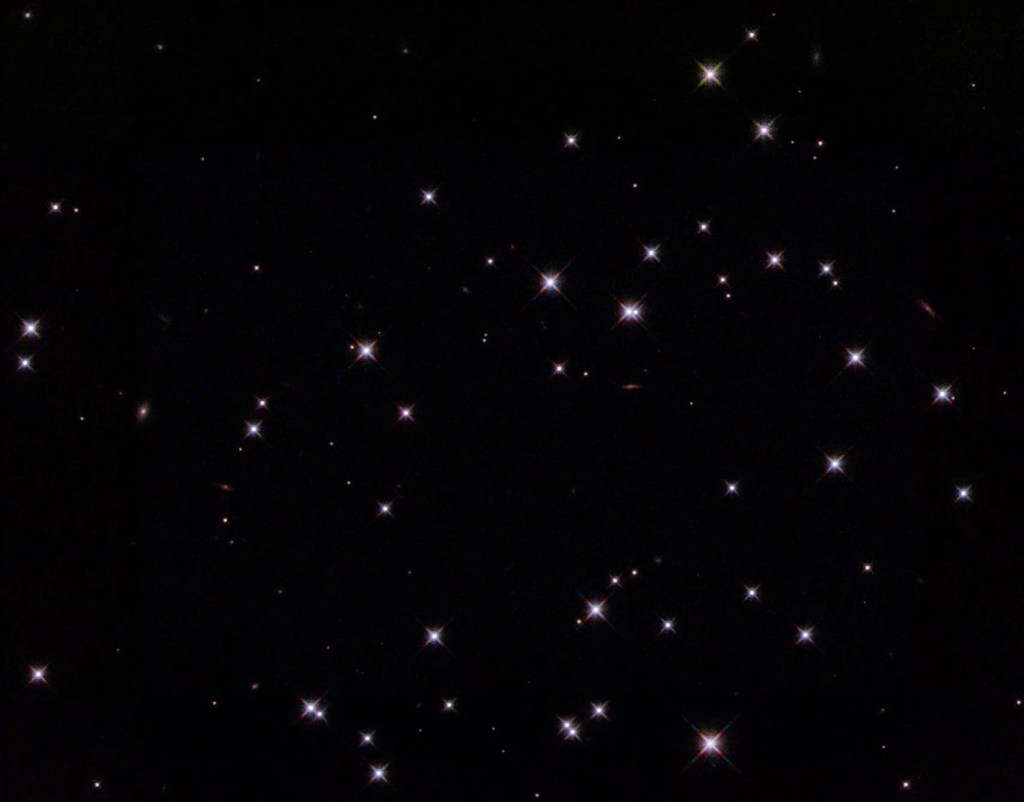
Also known as NGC 188, this group of stars formed from a large cloud of gas making the stars roughly…
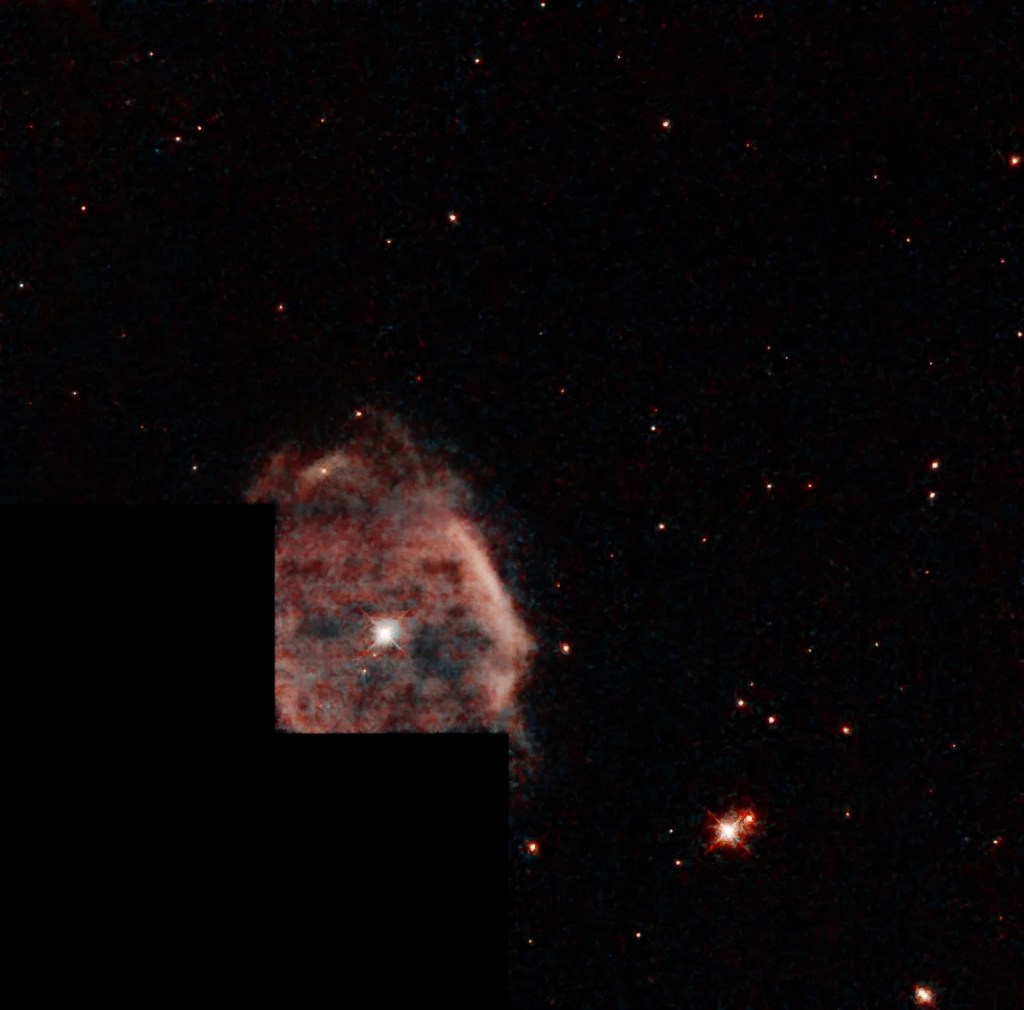
This shell of gas is expanding outward, away from the dying star within.
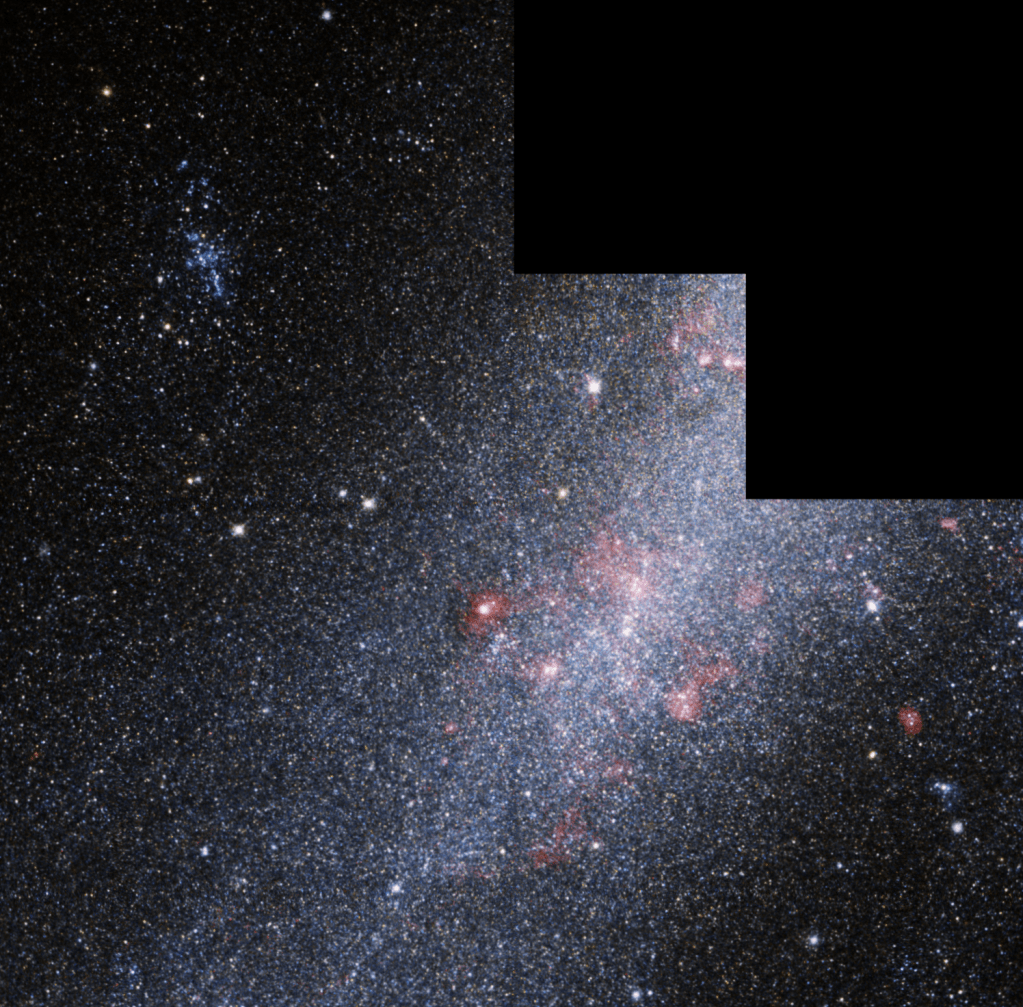
This barred spiral galaxy was first spotted by British astronomer William Herschel in April 1793 in the constellation Draco.


























